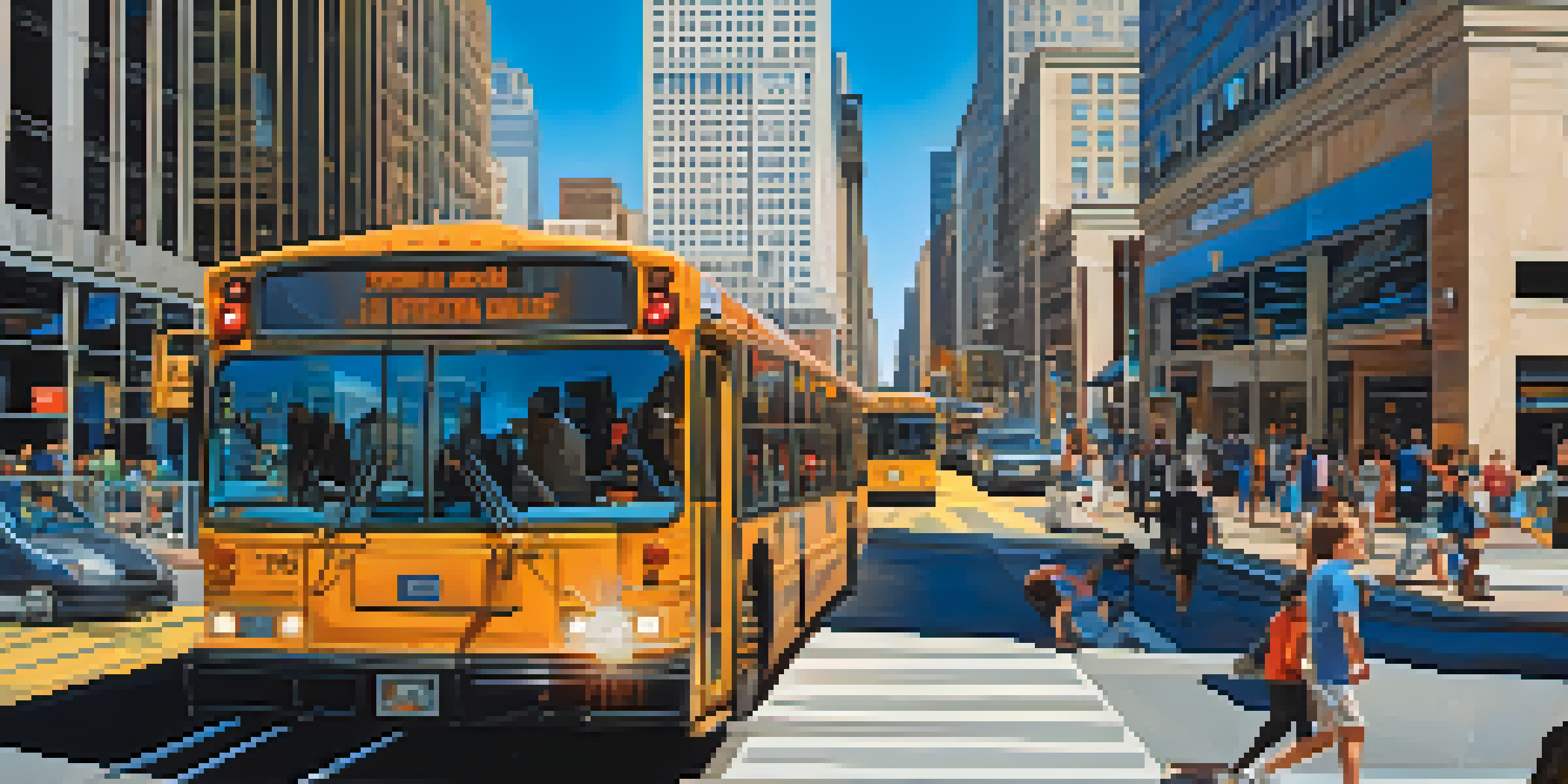Transportation and Its Environmental Impact in Newark

Overview of Transportation in Newark
Newark, New Jersey, is a bustling urban center with a complex transportation network. The city is a hub for rail, bus, and air travel, connecting it to New York City and beyond. With its diverse modes of transportation, Newark plays a vital role in the daily commute of thousands. However, this convenience comes with significant environmental consequences that warrant closer examination.
Air Pollution from Vehicles
One of the most pressing environmental issues related to transportation in Newark is air pollution. Cars, buses, and trucks emit harmful pollutants such as nitrogen oxides and particulate matter. These emissions contribute to poor air quality, which can lead to respiratory problems for residents. The more vehicles on the road, the greater the impact on the environment, highlighting the need for cleaner transportation options.
Air Pollution from Vehicles
Newark faces significant air quality issues due to emissions from cars, buses, and trucks, which can harm residents' health.
Impact of Public Transportation
Public transportation is often seen as a greener alternative to individual car use. In Newark, the NJ Transit trains and buses provide essential services to reduce the number of vehicles on the road. By encouraging public transport usage, the city can decrease traffic congestion and lower carbon emissions. Thus, investing in and promoting public transit is not just beneficial for commuters but also for the environment.
Bicycle and Pedestrian Infrastructure
Biking and walking are two of the most eco-friendly modes of transportation available. Newark has been making strides to improve its bicycle and pedestrian infrastructure, creating safer routes and encouraging residents to choose these options. Enhanced bike lanes and pedestrian-friendly zones not only reduce vehicular traffic but also promote healthier lifestyles. However, more investment is still needed to make cycling and walking appealing for all.
Emphasis on Public Transportation
Investing in public transportation can reduce traffic congestion and lower carbon emissions, making it a greener alternative.
The Role of Electric Vehicles
Electric vehicles (EVs) are gaining traction as a sustainable alternative to traditional fossil fuel-powered cars. Newark has seen an increase in EV adoption, particularly with the availability of charging stations. By transitioning to electric vehicles, residents can significantly cut down on greenhouse gas emissions. As more people embrace EV technology, the city can make strides toward a cleaner future.
Challenges in Transportation Policy
While there are many opportunities to improve Newark's transportation system, significant challenges remain. Policy decisions often prioritize short-term solutions over long-term environmental impacts. Additionally, funding for sustainable projects can be limited, hampering progress. A comprehensive approach that prioritizes sustainability in transportation planning is crucial for the city’s future.
Future of Sustainable Transport
Innovations like smart traffic systems and electric vehicles offer promising solutions for creating a more eco-friendly transportation network in Newark.
Community Initiatives for Sustainable Transport
Community-driven initiatives play a vital role in promoting sustainable transportation. Local organizations in Newark are working to raise awareness about the environmental impact of transportation choices. Events like bike rides and workshops encourage residents to adopt greener habits. By fostering a community spirit around sustainable transport, Newark can create lasting change.
Looking Ahead: Future of Transportation in Newark
The future of transportation in Newark holds both challenges and opportunities. As technology evolves, so too do the possibilities for reducing environmental impact. Innovations like smart traffic systems and increased public transit options could lead to a more efficient and eco-friendly transportation network. The key will be to balance growth with sustainability to protect the environment for future generations.